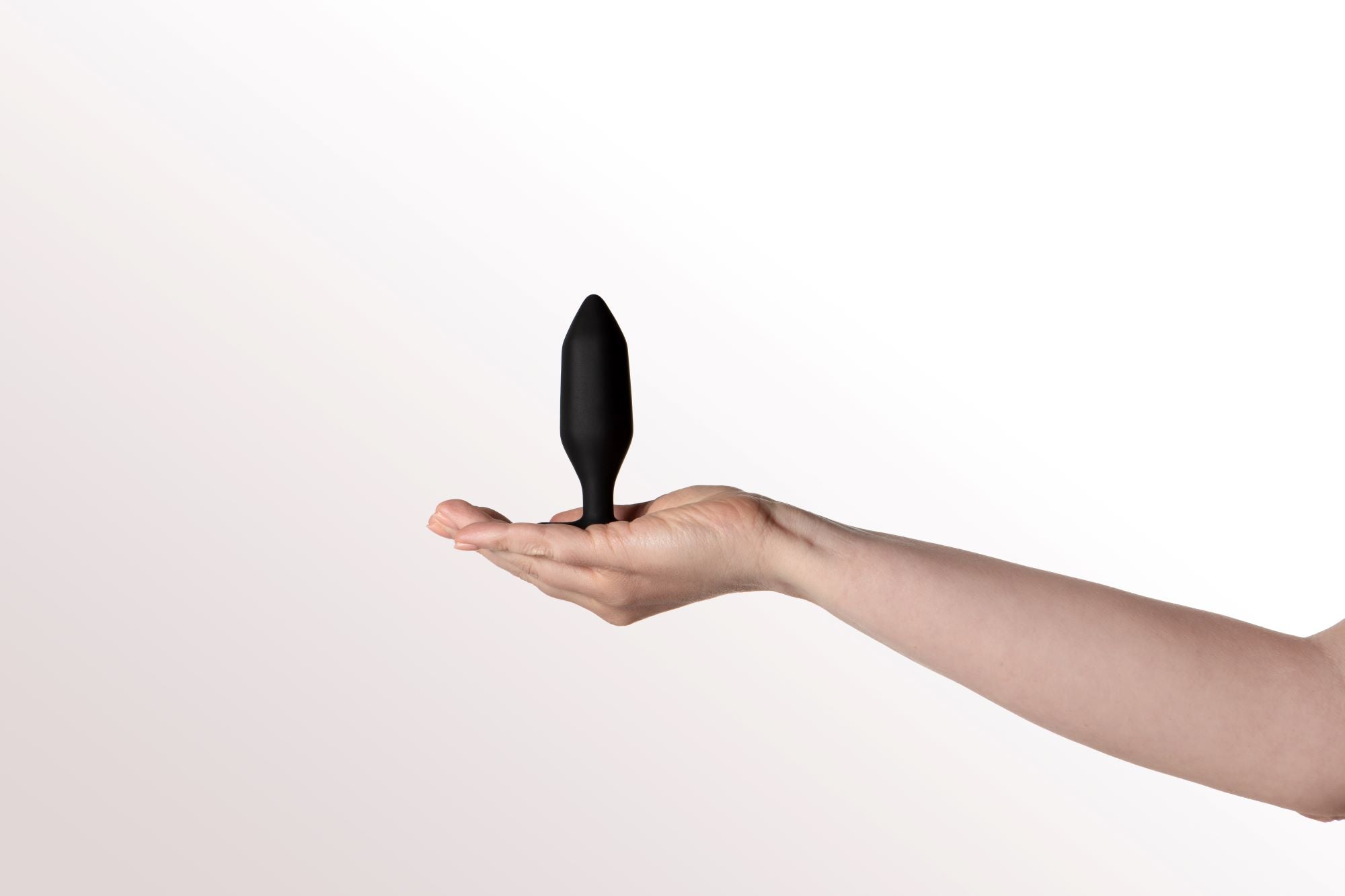
A beginners guide to BDSM with Sexologist Ness Cooper

We all have different erotic and sexual needs, and many of us enjoy more than just penetrative sex and seek out a mixture of fantasies and sensations. BDSM is where you can add new ways to explore sex with a partner, which can add in not only spontaneity but also additional connection and bonding.
What is BDSM?
The acronym BDSM stands for bondage, dominance, discipline, submission, sensation, sadism, and masochism. Recently sensation has been added to reflect peoples desire to explore sensations that aren’t just pain focused.
Bondage: Is where someone enjoys being bound and tied up, or enjoys tying up a partner.
Dominance: Is where one person takes control of the play scene, and can be seen as a form of power dynamic within the bedroom scene.
Discipline: Can be related to power dynamic play, however there are various kinks where discipline occurs without traditions Dom or submissive dynamics, such as pet play.
Submission: Where a partner submits to the other partner during a bedroom scene as part of a power exchange. Often someone acting as a submissive will submit to someone in a Dominant role.
Sensation: Where someone enjoys sensations during a scene, such as water running over their body, or heat from a massage candle.
Sadism: This is where someone consensually gives pain to another, often through spanking or pinching nipples.
Masochism: When someone enjoys receiving pain consensually. They may be a spankee, if they enjoy being spanked by another.
Where does kink come into BDSM?
Kink is another umbrella term for sexual and erotic acts that differ to what society sees as the current normative for sex. Some people prefer to use the phrase kink as it can cover more variations in erotic tastes when compared to the BDSM acronym. Many people who class themselves as vanilla may also engage in the odd bits of kink play from time to time, and may find that kinky works better for them as they only dabble in kink acts every so often or too a less extreme when compared to how BDSM is traditionally portrayed.
Does someone have to be a Dom or sub to enjoy BDSM?
In BDSM there are a lot of cross overs with dominance and submission, however, being a dominant or submissive isn’t necessary to enjoy BDSM activities. You may find you even enjoy being both Dominant and submissive at times, and this is known as being a switch.
One big important thing to take away is that any form of BDSM, kink or power play dynamic you and a partner engage can only really be defined by you and those you are consensually engaged in when it comes to explore this world. Only you and your partner can define your dynamic and what works best for you.
How is different to other forms of sex?
Interestingly BDSM isn’t all about sex and for some people it’s not a sexual activity. There are many reasons why some people may enjoy beyond sex, such as just enjoying the sensations, losing control in a non-sexual way, exploring rope play as a form of artistry, or engaging in power play not just in the bedroom.
It’s up to you and your partner to decide whether or not you want to add a sexual side to your BDSM play or not.
What about fetishes?
A fetish is when someone needs something in particular to become aroused, or always become aroused by something such as an object. It’s fairly common for many people to experience some form of fetishism with foot fetishism being one of the most popular one. Not everyone into kink or BDSM have a fetish.
Where does BDSM come from?
We don’t fully know why people enjoy BDSM and are drawn to it. Research has previously shown that there is a mixture of reasons why people may be into various BDSM and kink activities, ranging from something that just feels as if it’s part of them from a young age, to those who develop an interest in it later in life.
There’s a common misconception that those into BDSM enjoy it due to experiencing past trauma, however there’s still very little research out there backing this theory. BDSM can help some people manage depression, anxiety as well as chronic pain conditions, and this may be due to how BDSM activities can release a mixture of feel-good hormones when performed, including endocannabinoids which can help people manage both social and physical pain.
BDSM and relationships, how does it play into them?
Studies show that when people engage in consensual BDSM they experience greater relationship satisfaction. One reason this may be, is because couples who explore BDSM together also explore different ways to talk about their sexual and erotic differences. Not only do they learn more about what they find satisfying within the bedroom they also learn deeper skills when it comes to communicating with each other that can be used outside of the bedroom setting too.
Exploring BDSM within the bedroom also allows couples to explore different roles that they may not venture into when outside of the bedroom. Many people who enjoy Dominant or submissive roles in the bedroom report that it can be a refreshing and relaxing change to how they present in their everyday lives. This can also allow them to be spontaneous and explore sexual and erotic novelty if they have various kinks to explore during different bedroom scenes.
What do people enjoy during a BDSM scene?
There’s a lot of variation of activities and dynamics that can be explored in the bedroom when engaging in BDSM, and it’s likely some activities and dynamics preferences will differ between yourself and your partners BDSM needs.
When performed safely and consensually BDSM can seem limitless in its possibilities.
The most common BDSM activities people engage in are:
- Spanking with up to 35% of people reporting they have tried it before
- Tie and tease and restraints with up to 22% of people having previously explored it
Based on the PLOS study.
How to talk about BDSM with a partner?
Bringing up the topic of BDSM can make those within a relationship nervous as they are revealing differences about their sexual and erotic tastes that may not have come up in the relationship before. This form of differentiation within the relationship can overall help strengthen intimacy, however sometimes it can come as a surprise to a partner just introduced to the idea.
When talking about adding BDSM into your relationship and your partner is new to the idea, allowing them time to process the concept can be helpful. It’s likely you’ve been thinking about it a lot longer than they have, and it’s totally ok not to be in sync right away due to this.
Try avoid overwhelming your partner at first. It can be easy to get carried away and try and introduce a partner to too much at once. Start with the most important and basic parts of what you want to explore in BDSM first, and when you have worked through exploring these you can expand on them further.
Explain what emotions and feelings there are behind your BDSM desires. For example, “I would like to explore spanking as I feel it’ll make me feel happy and rewarded when I’m spanked by you.”
Don’t forget to ask them if they wish to explore anything BDSM related too! It can be easy to focus on just one side, but when introducing the idea to a partner, it can open up the chance for them to think about their BDSM desires too.
Ask them how you can make the experience rewarding to them or if there’s anything in particular they would like to gain from the experience too.
Playing safely in BDSM
Negotiating consent before you explore a scene within the bedroom is often better than doing it in the moment. Once you have opened up the conversation around BDSM with your partner exploring limits and erotic acts you both are comfortable and consent to can be helpful.
Safe words are a good option to use within a scene where you can navigate and communicate limits further. When picking a safe word, making sure it’s unique as well as easy to say in the moment is important. Whilst “Stop” sounds like a sensible safe word, it can easily be missed within the bedroom when heavily in a kink scene.
FRIES is an acronym used by many people who engage in BDSM to stay safe within a scene. Freely Given, Reversible, Informed, Enthusiastic, and Specific. Meaning that those engaging in BDSM whether that’s inside the bedroom or outside of the bedroom, those involved haven’t been coerced or forced into exploring BDSM, and are able to remove consent at any stage even during a scene. Also all involved have been fully informed about what type of erotic acts and engagement they should expect within the scene and all been able to contribute to what will happen.
If exploring tie and tease, making sure all restraints aren’t bound too tightly around the persons body is important to avoid cutting off circulation.
When exploring impact play such as spanking avoid aiming for the spine, and where vital organs or. Sticking to the buttocks can be a safe point of call as the glutes are generally padded fleshy areas. Also spanking this area can act as an erogenous zone!
Cleaning any sex toys used within your BDSM play afterward and making sure any consensual injuries are cleaned is important to reduce the chance of future infections.
Top Tips On How To Explore BDSM
Here’s some top tips on how to get started with BDSM. Whether you’re someone who is sensation seeking or want to explore Dominance and submission, it’s always worth checking in with yourself and reflect on how to dive into these erotic realms.
Fantasies
In Lehmiller’s study on sexual fantasies BDSM was one of the top fantasies people experienced with up to 96% of people fantasying about it. Top BDSM fantasies included threequarters of people were into being restrained or restraining another, around half stating they fantasied about BDSM discipline and around 20% enjoyed fantasies around dominance and submission. With BDSM being so popular in fantasies, it makes sense that so many people want to explore it in real life.
When working through your sexual fantasies around BDSM, working out which ones you want to explore in real life and which ones you want to keep as fantasies is important. We don’t have to act out ever fantasy we have.
Fantasies can also go into realms which aren’t practical in real life, and thinking about how to compromise or change things up in safe and consensual role plays is important.
If your BDSM fantasy isn’t something you can act out due to it only being possible within the mind, learning to work out if you’re ok with that can be important. You can always use your fantasies in your mind during other sexual activities to add more arousal to the moment.
Shopping
Checking out what you need to act out your BDSM desire is important, but also shopping for BDSM items can open an opportunity where you can look at things with a play partner too. This can open up the conversation as well as even help add in inspiration to what you both want to get out of a BDSM scene together.
If you’re new to BDSM and worried, option for something basic can be a great starting point, and you can always add to your collection at a later point.
Conversation and contracts
Starting conversations around BDSM can be tough. Focus on taking it slowly when it comes to talking about BDSM at first, and remember that everyone will class different forms of BDSM as more or less extreme.
Contracts are a popular thing some people engage in when it comes to BDSM, these are ritual-like forms of connection where all involved with the contract discuss boundaries beforehand. If contracts are something you’re looking into remember that in the moment consent or removal of consent still wins over a past contract, and those using consent beyond the contract shouldn’t be made to feel bad about it.
Contrary to popular beliefs, a lot of BDSM is based on rewards and not punishments.
Picking your scene and setting
Once you’ve explored fantasies, conversations and even shopping for everything you need, thinking about how you want your play scene to go is important. More importantly if you’re unable to act out parts of the scene are you able to sit with that discomfort. It can take time to build up to a full scene and some find that adding five or so minutes of consensual spanking is a great start, rather than planning a full-on hour or so.
Making sure you have space is also important as some BDSM play can take up more room than just standard sex.
Pick a max of 3 things to explore
Within my private practice I always recommend people to explore three things at a time, particularly as BDSM can take time to get into. Our brains can become overwhelmed if we try to aim for too many things at once, and some BDSM and kinks can take longer to transition from than others. It’s also worth noting that sub space or Dom drop can occur between acting out different types of BDSM and kinks, meaning that you may have to stop part way due to you or your play partner experiencing a heady mixture of endorphins and feel-good hormones.
Remember Aftercare
Aftercare is something that can be performed after any form of sex, but can be particularly important after BDSM sex. Putting together an aftercare plan before BDSM can be important as often you and or your partner may be experiencing a rush of hormones when aftercare is needed which can lead to brain fog. Some popular forms of aftercare are cuddling, having a snack, talking, and listening to music. It’s whatever you find grounds you back into reality in a relaxed way.
Je Joue sex toys for BDSM
The Naughty Gift Set is a great combination of items to get you started in exploring BDSM play. The set includes satin ties and a blind fold for you to explore tie and tease. You or your partner can be blindfolded and ties, as one of you teases the other with the Mimi vibrator. The massage candle can act as a form of temperature play, helping change how sensations feel. Additionally the kit comes with a selection of cards which can help you open up the conversation around BDSM.





Leave a comment
This site is protected by hCaptcha and the hCaptcha Privacy Policy and Terms of Service apply.